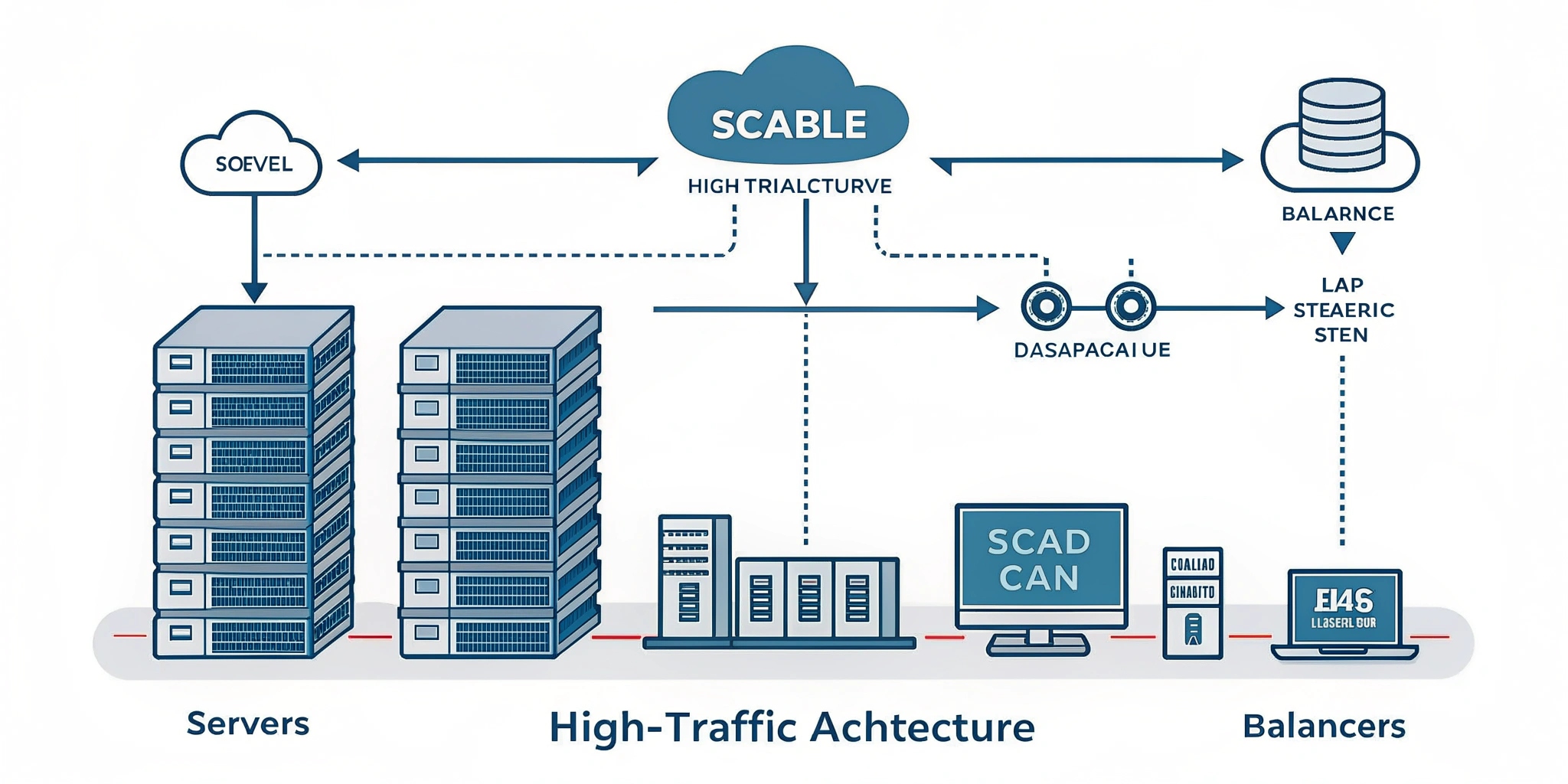Main Content :
In today’s digital landscape, websites must be able to handle rapidly increasing traffic without compromising speed, reliability, or user experience. Whether it’s a global eCommerce platform, a social media app, or a news portal, scalability is no longer optional—it’s essential. A well-designed scalable architecture ensures your website can adapt to user growth, traffic spikes, and data expansion while maintaining optimal performance.
1. Understanding Scalability
Scalability refers to a system’s ability to handle increased workload or traffic without performance degradation. A scalable architecture can grow seamlessly by adding more resources, such as
servers or processing power. The two primary scaling strategies are:
- Vertical Scaling (Scale Up): Increasing the capacity of existing resources (e.g., adding more RAM or CPU).
- Horizontal Scaling (Scale Out): Adding more servers or nodes to distribute the load efficiently.
2. Core Principles of a Scalable Architecture
Building a scalable website involves a mix of design principles and technology choices. Some key principles include:
- Modularity: Breaking applications into smaller, independent components (e.g., microservices).
- Redundancy: Having backup systems and servers to ensure uptime.
- Elasticity: The ability to scale resources up or down based on demand automatically.
- Fault Tolerance: Designing systems that can recover quickly from failures.
3. Load Balancing and Traffic Distribution
Load balancing plays a vital role in handling high traffic. It ensures that incoming traffic is evenly distributed across multiple servers to prevent overload. Tools such as NGINX, HAProxy, or cloud-based load balancers (like AWS Elastic Load Balancing) can help maintain performance and prevent downtime.
4. Caching for Performance Optimization
Caching is one of the most effective strategies for scalability. By storing frequently accessed data temporarily, caching reduces server load and response time. Popular caching tools include Redis, Memcached, and Varnish. Implementing CDN (Content Delivery Network) services like Cloudflare or Akamai can also speed up global content delivery.
5. Database Optimization
Databases are often bottlenecks for high-traffic systems. To scale efficiently:
- Use database replication to distribute reads and writes.
- Implement sharding to divide large datasets into smaller parts.
- Choose the right database type—SQL for structured data and NoSQL (e.g., MongoDB, Cassandra) for flexibility and scalability.
6. Embracing Microservices and Containerization
Microservices architecture allows different components of an application to scale independently. Combined with containerization tools like Docker and orchestration platforms like Kubernetes, businesses can deploy, scale, and manage applications with greater efficiency and reliability.
7. Auto-Scaling and Cloud Infrastructure
Modern cloud providers such as AWS, Google Cloud, and Azure offer auto-scaling solutions that dynamically adjust resources based on real-time traffic. This ensures that your website performs optimally during peak loads while reducing costs during low-traffic periods.
8. Monitoring and Continuous Improvement
Scalability isn’t a one-time setup—it requires continuous monitoring and optimization. Tools like Prometheus, Grafana, and New Relic help track performance metrics, identify bottlenecks, and ensure proactive scaling adjustments.
9. Security and Fault Tolerance
With increased scalability comes a greater security responsibility. Implement DDoS protection, SSL encryption, and regular backups. Additionally, design your system for fault tolerance—ensuring that a single point of failure doesn’t bring the entire application down.
10. Conclusion
Building a scalable architecture for high-traffic websites demands a combination of smart design, the right technologies, and continuous optimization. By focusing on load balancing, caching, cloud-native infrastructure, and monitoring, organizations can deliver high performance, reliability, and user satisfaction even under immense traffic pressure.


